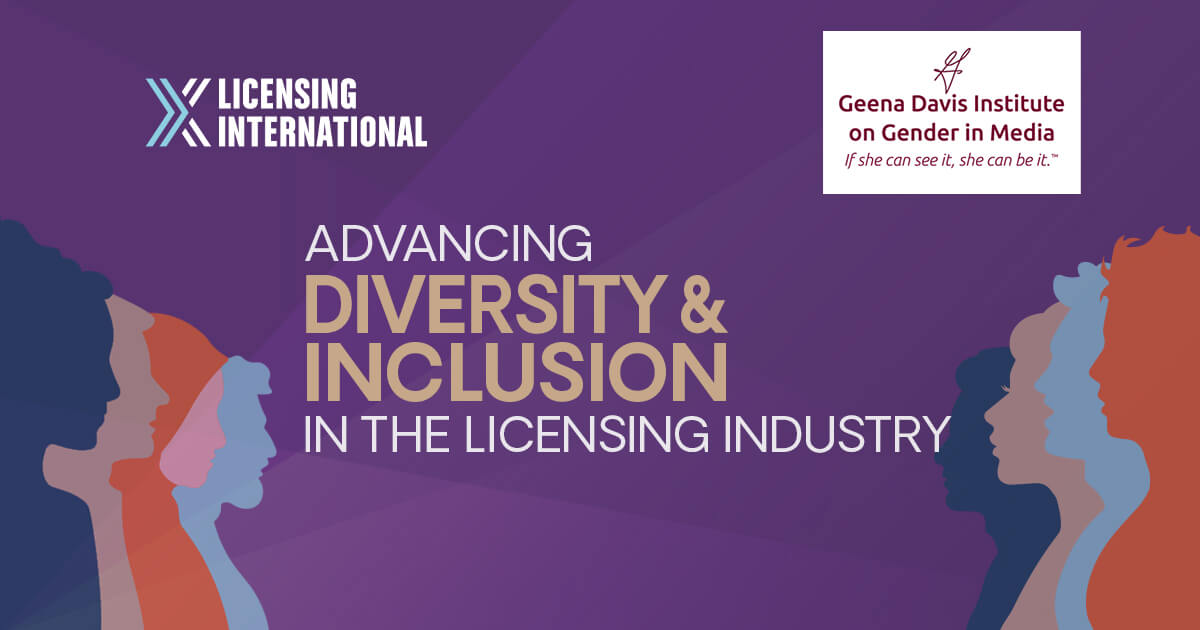Progress on Diversity & Inclusion, but Work Remains

A year after Licensing International and the Geena Davis Institute on Gender in the Media released results of their initial survey on diversity and inclusion (D&I) within the licensing business, it’s apparent that while progress is being made, much work remains.
The need for D&I initiatives within their business operations – 41% of 246 companies surveyed in 2021 vs. 30% a year earlier – comes as companies are face the challenge of appealing to an increasingly diverse customer base.
While companies are implementing hiring programs and training sessions – 15% of respondents reported having a D&I budget, up from 10% in 2020 – for their operations, diversity is still lacking in the executive suite and on corporate boards, Encantos CEO Steven Wolfe Pereira said last week during a webinar examining the state of the D&I effort within the licensing community.
Leadership needed
“The talent is out there,” he said. “But you can’t recruit unless the talent sees diverse leaders. You can recruit folks, but they leave after a short time. You have a situation where you don’t have diverse leadership at the top and you have this unspoken thing within our industry that unless you have an ally that is going to make these changes, how are you going to keep that talent?”
It’s a challenge (and opportunity) both internally and externally. “When I looked around the licensing industry, it wasn’t diverse at all,” Jamie Stevens, Executive VP for Consumer Products at Sony Pictures Entertainment, said. “Finding diverse licensees and retail partners has not been that easy. And I have struggled in the licensing community to find diverse candidates who were interested and understood licensing just to be able to fill my team with diversity. We are doing a good job, but we are not there yet. But everyone realizes that it is important because the consumers that are viewing our movies” are diverse.
Modifying structures when needed
Stevens said she encourages staff to consider “different partnership structures” with emerging licensees in a bid to diversify product lines.
“If they have potential then we forget the MG and shepherd them along and help them because ultimately if we have a great product everyone is going to make money,” says Stevens. “I will have to explain [to management] why I didn’t make my numbers with this particular company, but if we license a company or hire an agency and we feel it is going to be beneficial in the end result, we have to be mindful to do that.”
It’s also a matter of changing the composition of the internal licensing, product development and associated teams. Companies need to “cast a wider net in hiring employees potentially outside the licensing industry, and from different parts of the U.S. and world,” says Malaika Underwood, Senior VP of Licensing at OneTeam Partners. A third (32%) of survey respondents reported they’d increased D&I recruitment efforts, up from 26% in 2020. At the same time, however, 52% said they had human resources staff dedicated to D&I, a decrease from 57% in 2020.
“The idea that a licensing person needs to have licensing experience isn’t necessarily true,” says Underwood, whose company recently hired someone to head up diversity and culture. “We can look for high quality people and help them learn the licensing industry.”
While D&I moved to the front burner at many companies in terms of both hiring and corporate image. following the death of George Floyd last summer, the trick has been in sustaining the momentum, says Wolfe Pereira. Fourteen percent of respondents reported having specifically-targeted D&I retention efforts, down from 18% a year earlier, due partly to the pandemic.
“I appreciate that some people are tired of the diversity conversation, but the reality is it isn’t going away, and you are seeing the community and consumers demand it,” says Wolfe Pereira. “The business imperative is that this [diversity] is what America looks like today. Multi-color done well is business done right.”
In the end, companies need to implement D&I initiatives as a “social and business imperative,” Stevens said. The lessons need to be “drilled down” to the licensing industry because “I don’t think we are there yet,” Stevens said. To ensure that metrics are met for D&I, companies should track their progress so that when there is an opening, they know how diverse a pool of candidates they have.
“It is easy to say that you have included diversity and inclusion in your process, but if you don’t keep stats about how that is happening you easily fall back into your old ways,” Underwood said. “If you can look back over the course of two years your stats will show whether you have cast that net wide enough.”
Here’s where you can find more information about Licensing International’s D&I resources.




